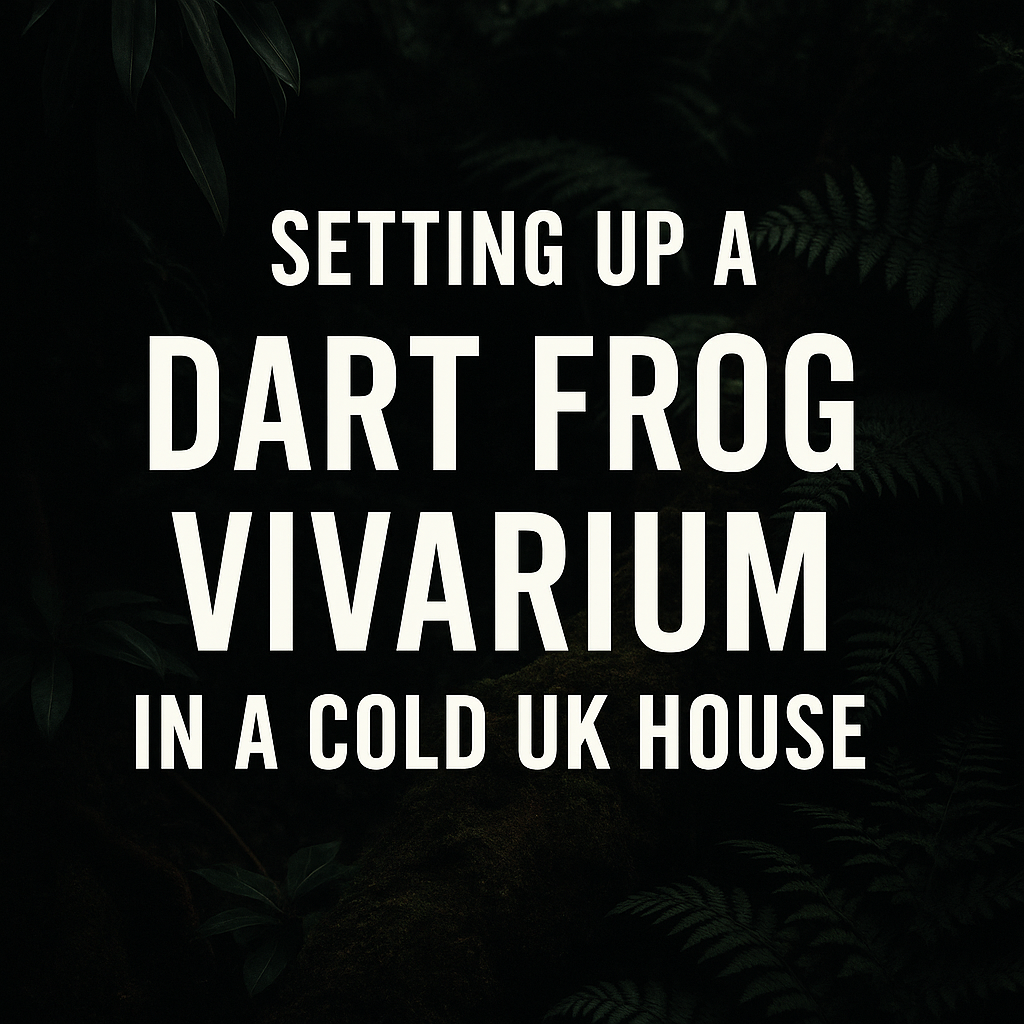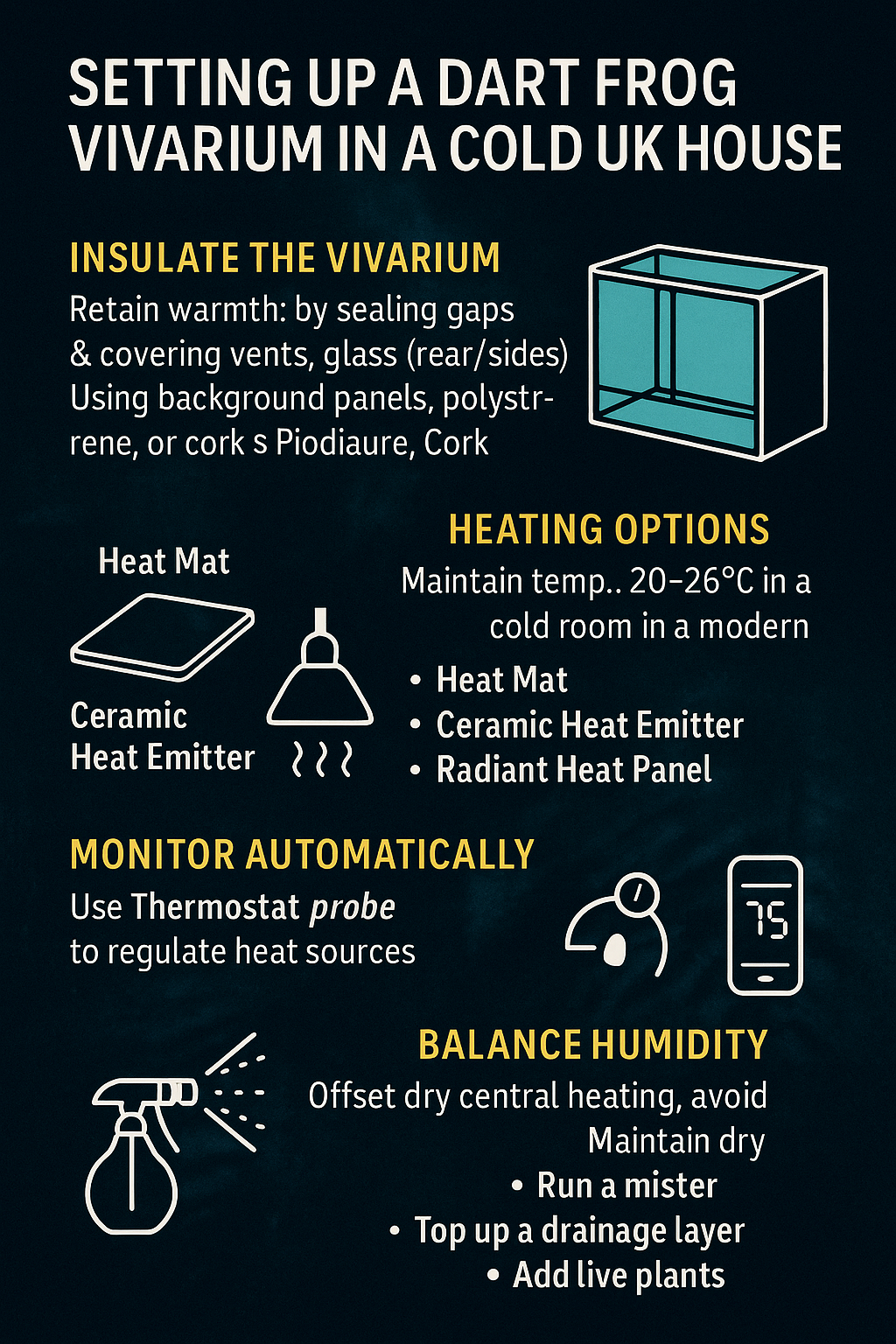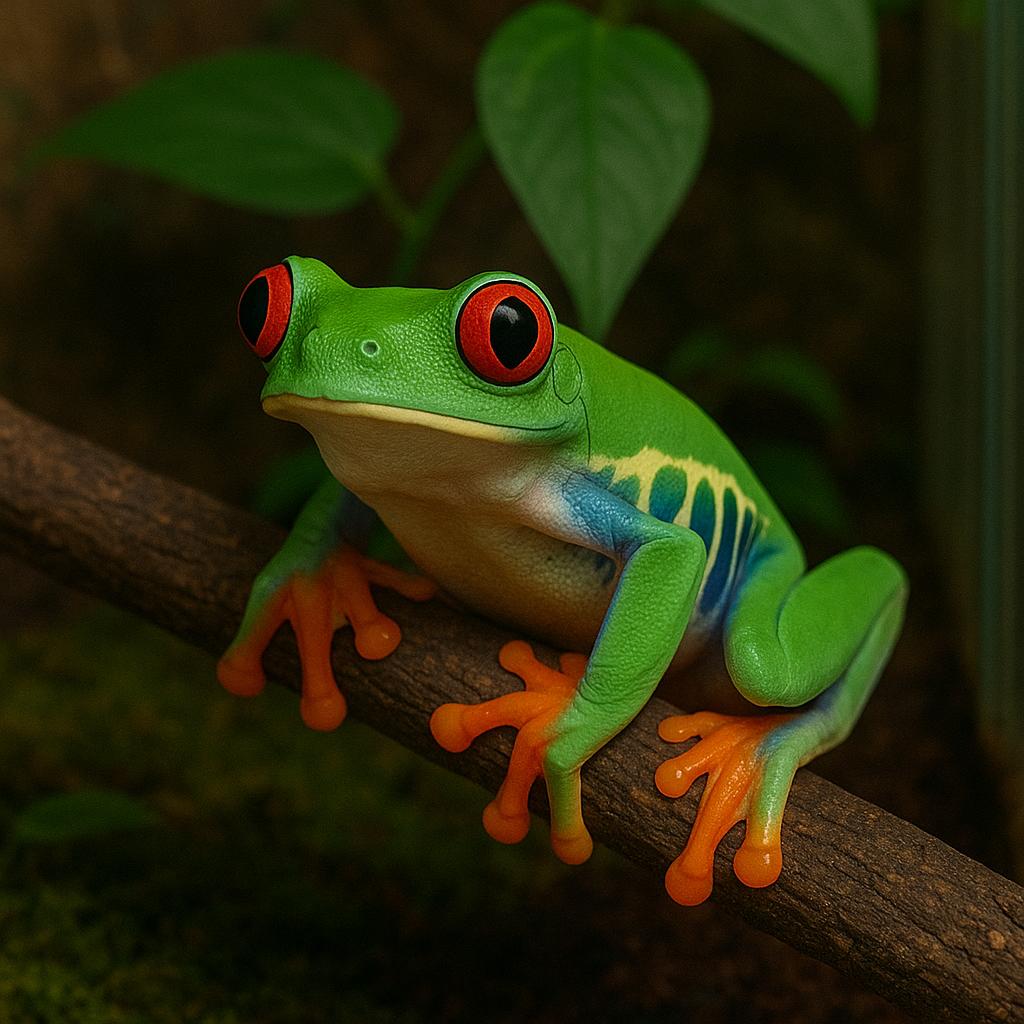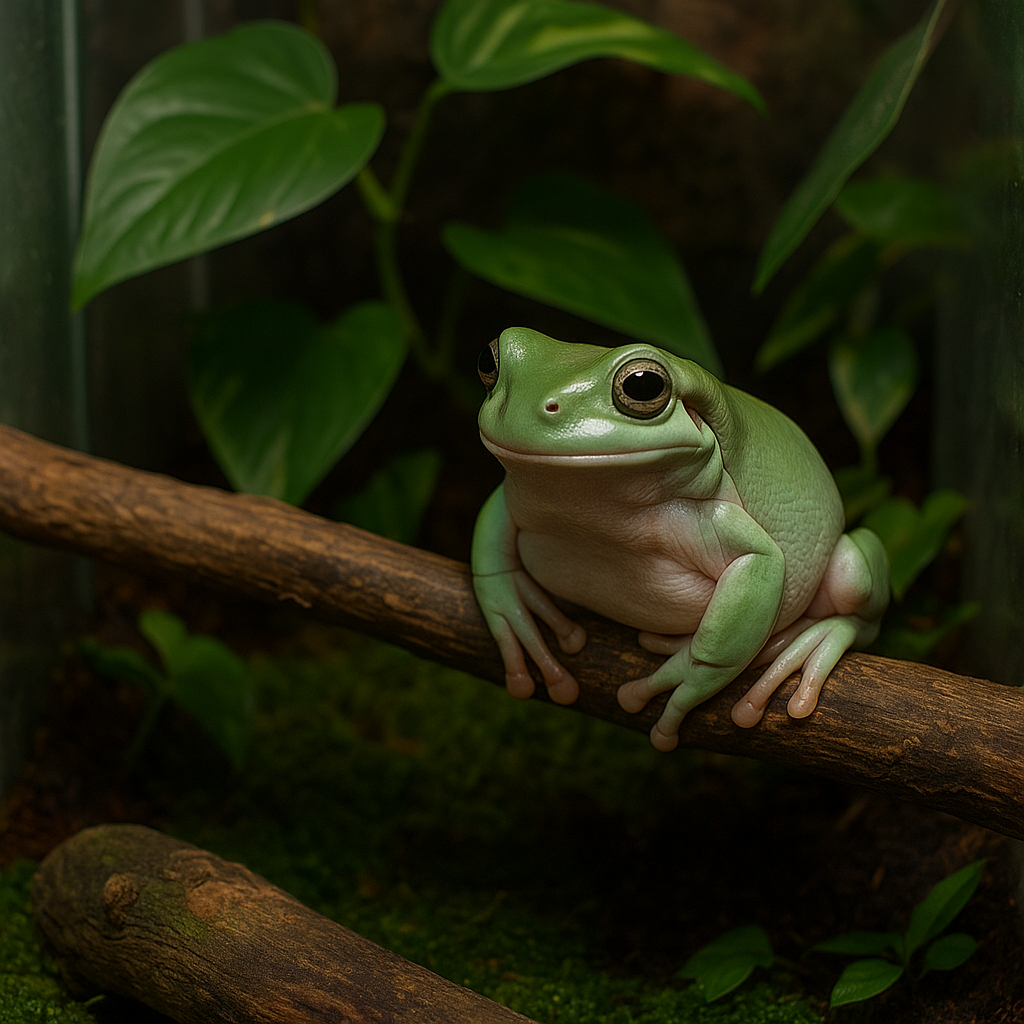Welcome to the UK: land of damp socks, draughty windows, and radiators that somehow make the air colder. If you’re trying to keep dart frogs happy through a British winter, you’ll need more than a spray bottle and good intentions.
Here’s a practical guide to insulating your vivarium, stabilising humidity, and keeping your frogs thriving in the chilliest months — even if your house feels more like the Outer Hebrides than the Amazon.
Can Dart Frogs Handle Cold?
Not really. Most popular dart frog species (tinctorius, leucs, auratus) prefer 22–26°C. Temperatures below 18°C for extended periods can lead to health issues, stress, or worse. Cold snaps in UK homes are sneaky — one power cut or failed heater and you’ve got a vivarium disaster.
Step 1: Where You Place the Tank Matters
- Avoid external walls and unheated rooms
- Keep tanks off floors — raise them on stands or cabinets
- Aim for rooms that stay above 18°C even at night
Even better: place the viv near a wall radiator (not too close!) or in a room with stable ambient heat.
Step 2: Insulating the Vivarium
- Use foam board or Reflectix on side and back panels to retain heat
- Seal up gaps in mesh lids — cut-to-fit acrylic or clingfilm over part of the mesh works wonders
- Check glass doors for draughts — a strip of weather seal tape can save your humidity
Insulation isn’t pretty, but neither is a frog with respiratory problems. You can always remove it come spring.
Step 3: Heating Options
- Heat mats: Best under or behind the tank, always paired with a thermostat
- Ceramic heat emitters: Good for larger setups or rooms that dip below 16°C
- Space heaters: Ideal for frog rooms or converted cupboards
Monitor tank temp daily with a digital thermometer and log fluctuations. Don’t rely on guesswork — frogs don’t shout when they’re cold.
Step 4: Humidity Management
UK winters = central heating + cold windows = bone-dry air. Your tank will drop from 99% to 40% RH in a day if you’re not careful.
- Mist daily — ideally morning and evening
- Use misting systems on timers or pressurised sprayers for bigger tanks
- Add live moss, leaf litter and cork to hold moisture
- Top up substrate hydration weekly
Want to build the right substrate? Read our bioactive substrate layering guide.
Infographic: Dart Frog Winter Setup in the UK

Don’t Forget the Lights
Daylight hours drop hard in winter. Keep your lighting on a timer — 12 hours on/off is a good base. Low light = low activity = no calls or breeding.
More info? See our vivarium lighting guide.
Emergency Prep for Cold Snaps
- Keep spare heat mats and battery-powered thermometers on hand
- Buy a power bank or camping power source if you’re remote
- Prepare insulated boxes (like poly reptile shippers) in case you need to move frogs temporarily
Things go wrong. Being ready saves lives — and not just frog lives, but your sanity too.
Cold House Doesn’t Mean Dead Frogs
Loads of UK keepers make it work — attic rooms, Victorian terraces, drafty rentals. With a bit of insulation, a cheap thermostat, and consistent routine, your frogs will cruise through winter like it’s Costa Rica.
Wrap up warm. Your frogs are counting on you.



